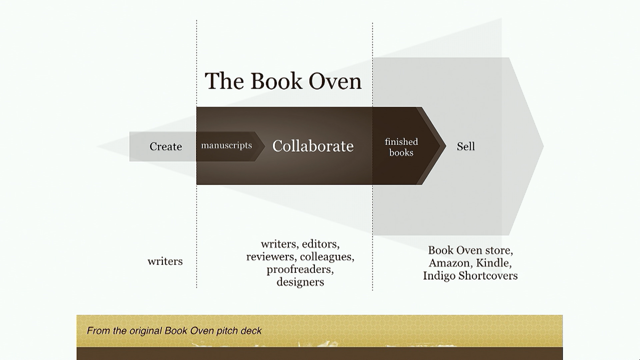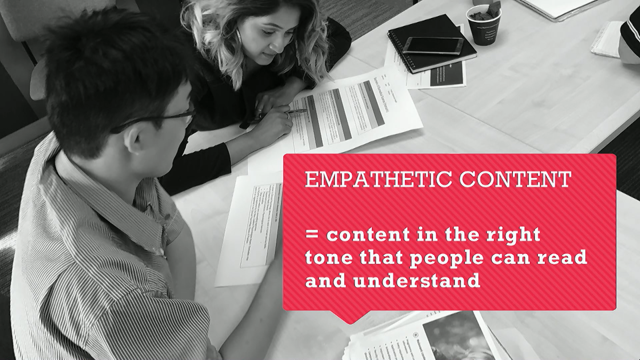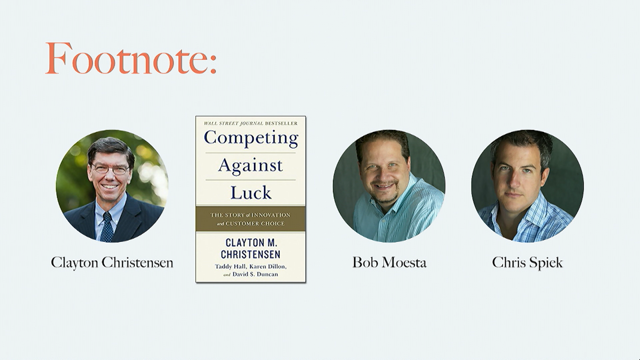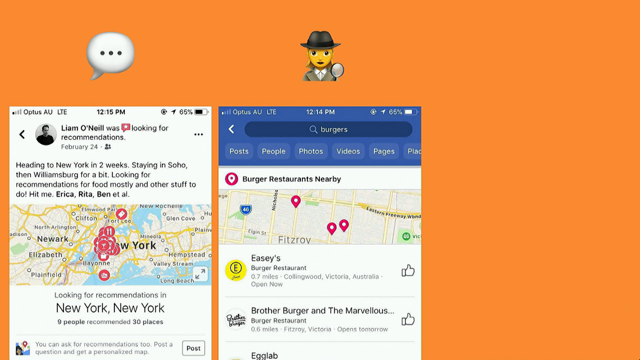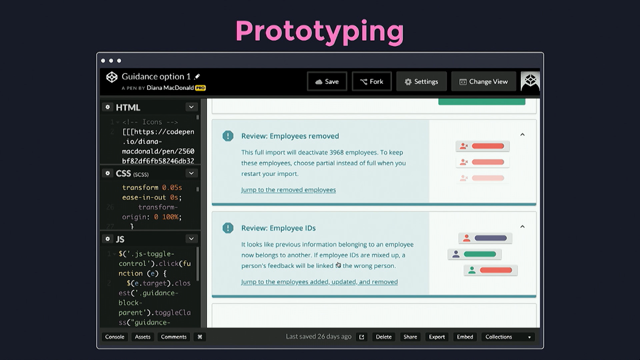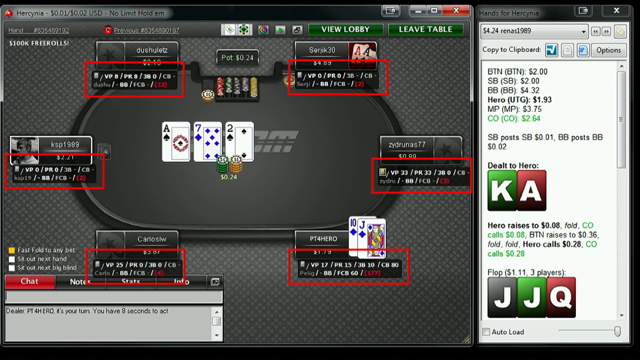The art of mindfulness in product design
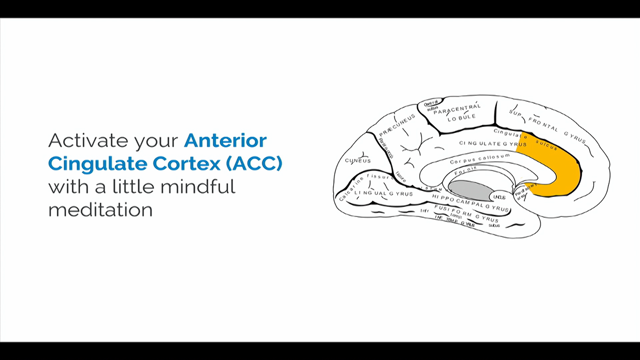
(upbeat music) - I wanna make a confession and I really want to invite you all to make a confession as well.
When you say you're present at work, are you really present at work? Raise your hands if you are.
We need to have a chat.
I'll tell you why I ask the question in a minute. So today my talk is based on art of mindfulness. So I started the whole mindfulness and meditation practise a while ago when I was going through some personal challenges and I often find having a lot of stress going on, anxiety, sleeplessness.
So I was doing a bit of therapy as well while I was doing this.
And I also stumbled upon Tim Ferris.
Some of you might know his podcast.
And he interviews a lot of leaders and experts in the industry to talk about their techniques and how they kind of do the A game.
And one thing I found in common was meditation. And I'm one of those people, cynical and sceptical about all these sort of fluff, and I always thought meditation is just another cult group or whatever that is. So I kind of stayed away from it for a very long time. And when I started trying it out I was like, hmm, I don't think I could do this really well. And I went on and off for probably a year or two. And then eventually at some point it just kicked in. And I realised it's really changing the way I see things and the way I design and the way I interact with people.
But at the same time, the mindfulness habit was only stuck in or confined in my meditation studio. And that's when I actively started thinking about how do I bring this practise more to the product design that I do at work? So I currently head up the design team at OpenCities. We are a group of passionate people working in civic tech space trying to build better digital government.
This is my team photo.
It's a small group based in Melbourne.
We have spreading operations in North America and New Zealand as well.
Just to start off with the mindfulness, what is it? So I will start with Jon Kabat-Zinn's famous quote on mindfulness.
So this is all he was saying, "Mindfulness is awareness that arise through paying attention on purpose, in the present moment, non-judgmentally." So Jon is a very famous American professor and he kind of popularised the term mindfulness and the whole idea of mindfulness based stress reduction programme.
So he kind of started creating the mindfulness occult status that we see in the industry at the moment. But there are a few things that stood out to me. Paying attention on purpose, in the present moment, and without any judgement .
How do you even do that? And what fascinated me with this approach is we're always thinking about the past, right? We're always thinking about the events that occurred, how we could have changed things around, how we could have made a decision much better. Otherwise our minds are wandering in the future. What's going to happen next? Am I gonna be at the job for the next five years or how how, AI is going to take over whatever I do? All sort of stuff are running through our head. But the funniest part is we don't have control over both past and future.
The only thing we can control right now is the present and we often forget that.
And we're constantly thinking about what else could happen. There are a lot of myths associated with meditation mindfulness.
The one is, meditation is mindfulness, which is incorrect. Meditation's one form of formal practise of mindfulness where you're sitting and you're probably focusing on your breath and doing a meditation session.
But that's not the only way you can actually apply mindfulness.
Even if you're having a cup of tea, think about the times, how many times you actually enjoyed just having that cup of tea without getting distracted, without really doing anything else on the side. And I'm guilty of doing this.
I'm one of those people at office where at lunch table where I'm having my lunch I have my phone going on.
I'm switching from Instagram to Facebook to Whatsapp or whatever.
That's my me time where I catch up with things happening while I was busy working during the day.
But what I forget it I do not really enjoy that lunch or the meal that I'm having.
I'm constantly thinking about everything else around me. So that is a common thing that you could start paying more attention to whatever you're doing. Well what fascinated me once I started doing meditation was the science aspect.
Even though the practise of meditation has been around for over 3000 years, the research behind it only started backing up in the last 60 or so.
And one of the things that fascinated me is about how mindfulness or even doing meditation can literally change your brain.
And this is, again, going back to a personal story of mine.
My grandma had dementia when she was in her 50s and I've seen her life just going through.
In a way it just degraded quickly and she looked very young but at the same time she wasn't sure what she was doing.
It really scared me.
Suddenly effect that you have everything that you can possibly think of, having great family, career, and everything. But there are things out of your control where you don't know what's gonna happen next right? And that also, that research and study also led me to start practising mindfulness and meditation. I guess I'm a control freak and I feel like maybe I started doing it because I want to control my mind and brain and see if I could improve new neural pathways to make it more better.
I've done heaps of research and studies on this in terms of reading and thesis and stuff like that. But there are two things I wanna share with you all which I feel might be useful for you guys as well. The first one is the regions of brain that will be changed while you started doing meditation mindfulness.
The first part is anterior cingulate cortex, which is highlighted over there.
This is the part of brain which collects the thought data, the physical sensation, and the emotional data, and gives us a clear picture on what's happening around us. So what happens is when you are meditating or when you are doing mindfulness practise, this part of the region is activated and this gives you much more emotional control over making a decision.
So instead of you doing a knee-jerk reaction, you could actually make more rational decisions by thinking, alright, what is right? Let's not just go crazy.
Let's pause and take a better decision.
The next one is hippocampus, which is the lower region of the brain.
This is the part of the brain that, again, goes back to the stress and the stress hormone cortisol and that sort of stuff. This is the area of the brain that actually controls all the receptors.
So by doing meditation, this is another region of the brain that you could control.
I guess going back to this research and why I wanted to share this is, in today's busy world, like, we all are connected in digital, we all are in tech, it's also up to us to build the resilience and how we can actually engage in our work in a much better way. So my talk today focuses on the mindfulness for design community.
But before I jump into that, I wanna share this with you, which I thought was amazing, where I found this research says 47% of the waking hours that we all spend thinking about other things than what we're doing.
Isn't it crazy? 47%, that mean half of our life.
It doesn't matter how long we live, half of our life we are not really thinking what we're doing.
It is crazy.
I don't know if you feel the same way.
So jumping onto the mindfulness for designers. I want to make a disclaimer when I say designers, it's not just the graphic designers, everyone working in this profession and all these techniques are kind of tailored towards what we do as a UX profession.
The first one I wanted to share with you is micro-meditation.
One of the common excuses that we hear that people say, I don't have time to do meditation. And I'm guilty of saying this.
I've tried to run away from it.
But this is a new technique I kind of, I think I kind of started doing it and I came across this word micro-meditation as well. I thought this is great.
I could share with people.
So one of the things I started doing recently is as soon as I wake up, I try to do a breathing exercise. It takes less than five minutes.
You basically find a comfortable position and you do inhale, exhale.
And you just keep focusing on that breath exercise rather than thinking anything else.
At this time your mind might be wandering.
It might wanna think about other things as well. But bring that focus back to the breathing and then try to calm down your nerves.
The reason why you wanna do this is this is the point in time when the stress hormone cortisol kind of kicks in, 'cause as soon as we're awake, the first thing we're looking for is, of course yes, turn off your alarm, which I'm assuming half the room might be using their phone.
As soon as we are awake we are looking at what happened overnight, what happened, who sent me messages.
So our brain is automatically tuned to think about what's going to happen the whole day. That's when the fight or flight mode kicks in and we are constantly thinking about what am I gonna do. But before you jump in out of your bed, just stay calm for a second and do that breathing exercise and see if it can make a difference.
And these are simple things you can start even trying tomorrow.
The next one is even before you get to work, as soon as we enter the office space, that's it. We are constantly asked to join a meeting, collaborate with someone.
Our attention is spread throughout the day. But just before you start, just stay at your desk and see, you can do a quick, another short breathing exercise to boost your brain so that you are fully aware in what's going to happen. The next one is conscious collaboration.
I think as UX designers we are in the middle or we are in the business office leading conversations all day every day right? So the conscious collaboration happens in the art of conversation.
I kind of came up with the three simple pillars which I think could sum up what I'm trying to say. The first one is mindful listening.
You know, sorry.
The funniest thing with mindful listening is you know when we grow up as kids, we were taught how to speak, how to write, how to read. How many of us were trained in how to listen? Isn't it fascinating? And even when we are growing, we are growing up our children, like I don't have kids yet, but looking after my nieces, I feel like when kids are telling you something you're often multitasking.
You're doing cooking.
You are not fully paying attention to what they're saying. Of course they're saying 100 things.
But how many times as a parent, or how many times as an adult, you have actually let the young kid to actually feel like you're fully paying attention to what they're saying? These are the simple acts how we pick up how others are listening.
So as UX designers, we go out and we do heaps of research and we do a lot of collaborative exercises. But half of the time our minds are not on what the other person is saying. We are constantly doing other things and multitasking as we go.
The next part is active observation, which, again, how much you're fully present in that moment and collaborating with the rest of the team. I'll get this in a minute.
The next one is purpose for presentation.
When you present, how much intent is behind that presentation? So let's get into the first one, which is mindful listening.
How can you be more mindful while you listen? The first one is drop any judgments.
You know the biggest barrier of us effectively listening to anyone, whatever they're saying, is our own preconceived ideas and biases, which tells the person who is talking to us has nothing to add or contribute, so we have these all hidden biases going on. I know we all talk about empathy, we try to cultivate it, but there are moments, I've caught myself actually having this preconceived ideas going on in my head. So drop it.
The more you learn to drop these judgments and you'll be a much better researcher.
The next one is maintain eye contact.
Well I'm not saying you should stare at the person who you're talking to.
A good thing to do would be 80 to 20, so you're looking at the person, you're having an active conversation with them. For 20% of the time you're kind of looking elsewhere and just making them feel comfortable, not like fully staring at them all the time. So that's a good balance to aim for, 80 to 20. The next one is work hard on being present. This is the trickiest, challenging one.
You know why? The science behind it.
The way how we talk, I guess the numbers are 135 to 160 words per minute, whereas a human brain can process 400 to 600 words. Look at the difference.
And I remember catching myself, I got a team member who is a very slow speaker, and the way she talks, I'll be thinking so many other things in my head. And these are the reasons I end up doing a mindful listening course.
I find really hard to pay attention.
I'm not in the moment because I'm like, okay, tell me what's going on, what's happening, because I am thinking already in my head what should I respond? I'm not paying attention to her concerns.
And it's the saddest thing.
And I wasn't a great team at all at that stage. But practising this mindfulness really helped me to just listen to it.
And the way I started doing this, every time I catch my mind wandering, thinking elsewhere, I'd bring it back.
So I know more than half of you are not listening to what I'm saying right now. Trust me, I know that for a fact.
And I would never hold that against any of you. But the trickiest thing is if you catch yourself, your mind is wandering, bring it back.
You have to do probably dozens of times in five minutes of a conversation.
But that's okay.
The more you do it, the more your brain is getting trained and more neuro pathways are creating in your head. So start doing it straight away and you will see the results immediately.
The last one is provide non-verbal feedback. This is, again, going back to the body language aspect, how much your body is showing the user that you are engaged, you are actually listening to the conversation we are having.
I'm not saying to nod constantly, but having a good balance, having a self way to understand what is good balance to do it.
And this is one of the favourite quotes I came across when I was putting together the slides from Stephen R. Covey.
He's the author written Seven Habits of Highly Effective People, I think, yes. "Most people do not listen with the intent to understand. They listen with the intent to reply." I just wanna leave you with this thought when I wrap up mindful listening.
Next one is active observation.
One of the things constantly worried me when I was doing stuff or collaborating with people was things that I keep thinking, maybe an upcoming deadline, maybe, as I run a meetup on the side, I think maybe I need to do this tweet, I need to contact this speaker.
There's so many things going on.
So I started doing something called, just removing every distraction that comes to my mind.
If a thought just pops up, I just write it down. So I recently started using Google Keep and one of my colleagues is using another tool called Workflowy, which, both works. The more you start clearing the distractions from your head, you're more clear and you're more focused on whatever you're trying to do.
So just start making these simple habits to see how we can make changes.
The biggest one is observe others without any assumptions.
This goes hand in hand with the previous statement I was saying, drop any judgments.
I love photography, so I'm actually going to use a metaphor using camera and lenses.
Human attention is kind of, it's in between a wide angle lens and a telephoto.
So you need to have the attention between these two where you have to see the bigger picture, you have to see the macro world to understand. Okay, what's going on, who am I talking to? You know, having that wider picture, using that wide angle lens.
At the same time, you need to have the telephoto, where you pick up the interesting detail, you pick up something that you think, hmm, that's quite unusual.
But what happens is most of us, the human beings, our attention lies in between.
We're not capable of switching from one to the other. So how can we actively train our brain and our mind to actually switch between to this mode, which is what an expert photographer do? Well I'm still working on it so I'm not an expert to do that.
Stop multitasking.
Why would we do that, right? We all do that.
We all are kind of guilty of doing it.
But I wanna run a game with you guys 'cause it's afternoon.
I feel like everyone is kind of a bit relaxed and feeling sleepy.
So don't start until I say start.
I want you to say, count from one to 26 in your head and whoever actually finishes first, raise their hand, or if you finish, just raise your hand.
Shall we? Okay, start.
Oh wow, okay, awesome, great.
The person sitting at the back, well done, I think you're the first person.
Now let's do the same from A to Z.
Start.
Ooh, that was a lot faster than the previous one. Now can we try one A two B three C four D? Let's give it a go, come on, trust me.
Wow, here you go, well done.
You love multitasking.
Okay, so what I'm trying to make a point here is, it's so much easier to just do one to 26 or A to Z because you're uni-tasking.
The moment you start to combine things or multitask, that's when your kind of velocity drops down. So I just wanna do the simple exercise to just give you a nudge of what actually happens. The last one is ask for help.
While you're collaborating there could be moments where you just miss something.
Sometimes your pride gets in your way that, ah, I don't wanna ask it.
But it's okay to ask.
It's okay to let them know that you didn't quite understand what was going on. So it's fine to ask that question and help you to identify the gap that's going on. Now the next one is purposeful presentation. A big part of what we do is present our work back to the team or work back to our stakeholders or whatever that is.
So how can we make it much more mindful? Facilitating conversations involve both listening in and speaking out.
I guess one of the things I wanted you to focus on is how do you find a good balance between these two? And the real art of conversation is actually being self aware that you're not talking too much but you are actually still conveying your point and then allowing others to speak as you do it. The next one is preparation is the key.
We often run into situations where we think oh we're fully prepared but we might come across some scenarios where it just throws us out.
Maybe we ran through all your interview questions in less than the planned time.
But the more you prepare the more you have control over what you do or what you're actually in doing the research.
And this is my favourite one, providing feedback. You know we all are in the space where often our work gets criticised, right? And as much as we say we love constructive feedback, we're not, because our body, our brain is not designed in a way that we do actually fully fully appreciate that feedback aspect. And this has nothing to do with you as a person. This has more to do with neuroscience.
And it says we are prepared in a way that it maximises the happiness or the pleasant experience and minimises threat. So the moment someone actually started giving you constructive feedback, doesn't matter whatever it is, you just get into that fight mode.
And it's okay to defend your work.
I guess what I'm trying to make a point here is as long as you actually support and back up your data, and let the others know what you are trying to bring onboard, share your design rationale.
'Cause everyone is actually trying to make a better product, whatever that is, but sometimes it misses the point of the way how we actually bring things to life. So share and yeah, just providing your feedback is really important.
At the same time there is another thing that you need to understand, managing emotions. Don't actually make someone feel like the way they design is really bad, which could be the case at times and you cannot run away from it.
But what I'm trying to say is try to focus more on the intent, like why you're giving that feedback rather than button shouldn't be in red colour or green or whatever that is. Try to actually emphasise your rationale behind it much more.
The last point that I want to focus here on design with intent and I was very happy to see Sarah and Stephanie already put a lot of weight in what I was trying to say. One thing I wanna start with, apply principles of calm technology.
I'm not sure how many of you are aware of this whole movement happening.
The idea of calm technology is how do we actually use technology to make people's life better rather than distracted? So Steph, I think you called Tristan Harris. He is running Centre for Humane Technology with a lot of people, actually, wanted to make technology better for everyone else. So I'll put the resource at the end so you can find the slide.
And create positive influence and change, which, as I said, Sarah and Steph already talked a lot on it so I'm not going to stress more. We all live in an area where in the attention economy where we're looking into commoditizing that human attention the more the users wanted to use our product and we looked into Google, Facebook, and all these examples earlier.
But how can we make it more mindful? How can we make not actually making users feel like raising their anxiety level or stress? I mean I actually experienced it a while ago where I'm doing some part time studies and I'm working full time, do other volunteering stuff, and at times when people invite me for social events I am a little bit under the snow and I wouldn't be able to actually make it to the event. So I say I'm sorry, I'm not coming today.
And at some point they stopped inviting me because they know that I'm busy so they made that assumption.
They no longer invite me.
But having the platforms like Google, Instagram, or Facebook, you see when they're hanging out.
The photos just pops up in your feed.
And you have this whole fomo going on because you know you clearly didn't have time but you wish you were there so you kind of switch between one or the other. And this is, again, going back to that philosophy of design with intent, and the notifications. So one thing I recently started doing, I think over a year now, I turned off notifications and I did have a few notifications going on for Slack and stuff like that.
Now I completely removed that too.
So if I know that I have to be on Slack for some reason I'll let people know that I will be turning on the notification just for that time period, otherwise I'll turn it off.
So that's one thing I'm actually trying to find kind of a, be grounded more while I do as a designer. Lastly, avoid dark patterns.
And I'm sure Mike Monteiro has already made a lot of information available on this topic, which I highly recommend you to have a look at it. Not trick your users while you design your product. Really provide your value what you are trying to achieve. As much as I'm actually evangelising this whole mindfulness thing, I want to leave you with a word of caution as well. We are in an age where mindfulness is even being taught for kids in primary school. Companies like Google, Facebook, Adobe, or Ford, they all have mindfulness programmes going on, which I'm not, I don't know, maybe I'm a bit sceptical because I haven't worked in any of these companies so I definitely have the biases coming as an external, but one thing I would ask myself is are these companies genuinely care about you as a person, as a employee, or are they giving you all these programmes to make the unbearable bearable, I would say? Just to make sure that they're trying to get more work done through offering these programmes.
So I do want you to have a think about it as well. So a few things, avoidance risk.
So something that's just head in the sand.
Don't run away when things get tough.
There could be a career dilemma you might be going for. There could be a decision you need to make. I'm not saying that don't think over and over. Sometimes you need to think.
Sometimes you need to reflect what's going on and then make a better decision.
But practising mindfulness helps you to clear your mind and make a better decision in that sense.
The next one is Groupthink risk.
I know you all listen to this mindfulness talk or you might have other resources where you found the information but don't make it very mandatory when you go back to your work next week. And getting the whole team, let's do the whole mindfulness thing before our meeting. Well it is true.
Some companies are already doing it.
I was reading Hit Refresh by Satya Nadella, the CEO of Microsoft and he was saying all the executive meetings start with a meditation practise. But again, this is a question.
How many people wanted to mediate with their colleagues? Maybe meditation and mindfulness thing will be a very personal or a private thing for many people. So do consider about the impact of what you're trying to bring to the team. So as much as I preach about it I would never ask my team members to actually practise mindfulness meditation at work. I already touched upon the corporate mindfulness bandwagon. Think about your company, whether they genuinely care about you as an employee or is it just to make that unbearable bearable? Lastly I wanna leave you with some resource. I've done heaps of research in this topic before putting together this slide because I'm not a licenced mindfulness practitioner or a meditation guru so of course I needed to do a lot of research to put together this. This is some of the books I've really found useful. Calm Technology by Amber Case.
And there is a few TED talks on the same topic. Wherever You Go There You Are, Jon Kabat-Zinn's very famous book, which is short book, really useful material.
Cal Newport's Deep Work.
I'm sure a lot of you might have heard about this book already, which is another great book, which really prompted me to deactivate my Facebook account for a year, which I tried when I first read the book.
It was very powerful for me just to control all the distractions happening in my life. And Mike Monteiro's Design Ethics.
Harvard Business Review's Emotional Intelligence, as well as Leading Mindfully.
This is one of my favourite teachers from Melbourne Uni. She wrote this beautiful book on mindful leadership. So if you're a design lead I highly highly recommend you to check that out.
I guess for anyone.
Yeah, it's more about being a leader and how you can be more mindful in the process. And this is the website I was talking about earlier, Tristan Harris and a few others founded, Centre For Humane Technology.
The website also brings you with a lot of resource, a lot of apps, Chrome or browser extensions that you could use at work to be more mindful.
And I recently discovered this podcast, Hurry Slowly. Some of you are probably interested in getting information through podcasts instead of reading books, so this might be a podcast you might want to check it out.
It helps you to build, be more mindful and creative in your process. Lastly an app that I started using to practise meditation, this is one of the apps that I found quite sticky comparing to the headspace, but everyone had their own different apps that they wanna use.
But few resource that I want to leave with you. If you wanna take a photo this is your chance. All the resources are up online.
Thanks for having me.
(applause) (upbeat music)









